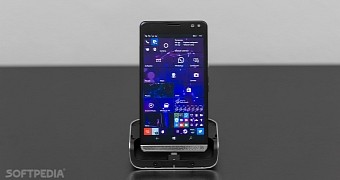The most exciting news of the week for users in the Windows Phone community was Microsoft’s announcement that it’s bringing the full version of Windows 10 on mobile devices, which essentially means that the same version of the OS that’s powering your PC right now will also power your phone.
It goes without saying that this is huge, and having Windows 10 on phones is quite a major achievement, but when looking into how things are right now for Windows Phone/Windows 10 Mobile, it’s hard to believe that this new technology can make any difference.
First of all, let’s go back to the number one problem on Windows phones right now. I guess the majority of users of Windows Phone and Windows 10 Mobile devices agree that the lack of apps on the platform is a major drawback, especially when comparing with iOS and Android. Apps are the essence of a mobile device and no matter what hardcore Windows Phone fans think (or say), not having them is simply ruining the whole experience with Windows phones.
Windows 10 Mobile has kind of become a mobile platform that’s more or less aimed at enterprises, and Microsoft sort of seems to suggest the same thing. HP Elite X3, which is pretty much the most powerful Windows phone to date, is specifically targeting enterprises with features that certainly come in handy in terms of productivity.
But no matter if we’re talking about consumers or enterprises, the lack of apps is still a huge setback. Because when not working, those enterprise users are becoming consumers and they need apps to use with their phones.
The idea of making Windows 10 Mobile so powerful that it can replace a PC is that you can have your files with you wherever you go.
Enterprises are consumers too
So a Windows 10 Mobile customer is supposed to work on his phone at the office (in Continuum mode) and then remove the device from the dock and use it as a regular phone. Here’s where the lack of apps is hurting the platform. Outside of work, everyone needs apps for ordering food, paying bills, browsing the web, chatting with friends and things like that, so no matter the target of Windows 10 Mobile, this is one major problem that Microsoft needs to deal with.
We’ve heard many people saying that this is what Microsoft is doing right now with full Windows 10. And it’s all because of a simple reason. With full Windows 10, a phone would be capable of running desktop apps, and given the fact that there are billions of them out there, you’d never need Store apps.
And yet, this isn’t true.
Full Windows 10 won’t bring millions of app on Windows phones
Desktop apps on a Windows phone only make sense when used with Continuum because, otherwise, running a Win32 app on a screen that small is pretty much impossible. These programs are optimized for use with a mouse and keyboard, and not for the touch. So yes, when your phone is connected to an external display, having desktop apps is brilliant and hats off to Microsoft for making this possible.
But then again, what do you do after removing the phone from the dock and leaving the office? You’re stuck with the same phone that needs apps from the Store. And once again, the lack of apps is what’s dragging Windows phones down, no matter if they run Windows 10 Mobile or full Windows 10.
Universal apps can indeed help save Windows phones, but as you can see, the developer interest so far is clearly below expectations. And without them, it’s hard to believe that Windows phones can improve substantially beyond where they are now.
There are some people who think that Windows 10 Mobile no longer has a future after full Windows 10 sees daylight on phones. And this is probably right at some level. But not entirely.
Microsoft can very well create a stripped-down version of full Windows 10 for phones, allow running desktop apps in Continuum mode, and adapt it to smaller screen sizes. But in the end, this is exactly what Windows 10 Mobile is supposed to be. So why killing Windows 10 Mobile when it already fits its role very well in Microsoft’s long-term mobile vision? Just add support for desktop apps and that’s it.
In the end, as exciting as this announcement seems to be, it’s not what Windows phones needed to become more widely adopted. It’s something else. It’s something that Microsoft was this close to release, but for some reason killed it. It’s Project Astoria.

 14 DAY TRIAL //
14 DAY TRIAL //